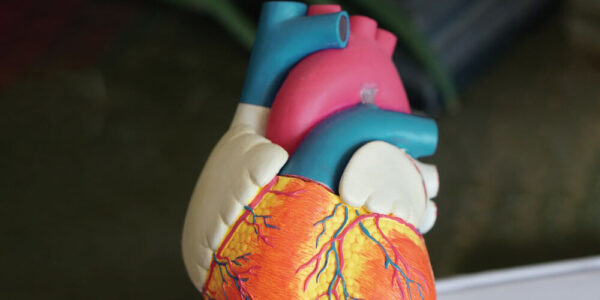What causes inflammation and excess fluid to surround the heart? And what is the treatment?
Her beautiful brown eyes were filled with fear and questioning. Her breathing was rapid and shallow. Her pulse was weak and fast. She had been sick for some time and needed urgent treatment. The sharp, wide-bore needle was carefully inserted just to the left of the breastbone, aiming toward the left shoulder. Fluid began to flow back into the syringe. A pigtail catheter was inserted through the needle—so named because it curls up like a pig’s tail once the more rigid guidewire is removed. Slowly, and in a measured way, fluid filling the sac around the heart was drawn off. Her heart began to fill and empty more fully; her blood pressure improved; the pulse strength returned, and a look of hope filled the woman’s face.
We are fearfully and wonderfully made. The heart is an example of marvelous design and function. The heart is a muscular pump that sustains life by pumping nutrient- and oxygen-rich blood to all the tissues of the body. The carbon dioxide thus collected is exhaled by the lungs, and other waste products are eliminated through such organs as the liver and kidneys. The pumping action occurs rhythmically throughout life from a few weeks after conception until the day of death. In order to pump blood the heart must be able to receive blood and be filled.
Surrounding the heart is a saclike fibrous structure called the pericardium. Its function is mainly to protect the heart from overdistention (stretching too much when being filled with blood), and to maintain efficient function despite surrounding organs and structures. One may live without a pericardial sac if the heart is otherwise normal. This occurs with the congenital absence of the pericardial sac, or when the sac has been surgically removed.
Many inflammatory conditions of the body’s organs or tissues are designated with the suffix “-itis”; pericarditis indicates an inflammation of the pericardial sac around the heart (appendicitis—inflammation of the appendix). Pericardial effusion is the accumulation of fluid around the heart as a result of inflammation, infection (viral or bacterial), trauma (blood forms a puncture wound of the heart), muscle scarring from a heart attack, or even parasites. Sometimes the term myopericarditis is used, indicating involvement of both the pericardial sac and the heart muscle. The cause of the large pericardial effusion in our patient was active tuberculosis; she was also infected with HIV.
Another form of pericardial disease may follow an inflammatory condition, trauma, or radiation, and is called constrictive pericarditis. The scarring around the heart impairs the heart function.
What is the treatment? Relieve any acute distress by draining the fluid from the sac that surrounds the heart. A specific diagnosis is then made, and the underlying cause is treated.
This disease illustrates a spiritual principle: The unfilled heart is unable to give and sustain. May our lives and hearts be filled by God’s sustaining Spirit every day!



